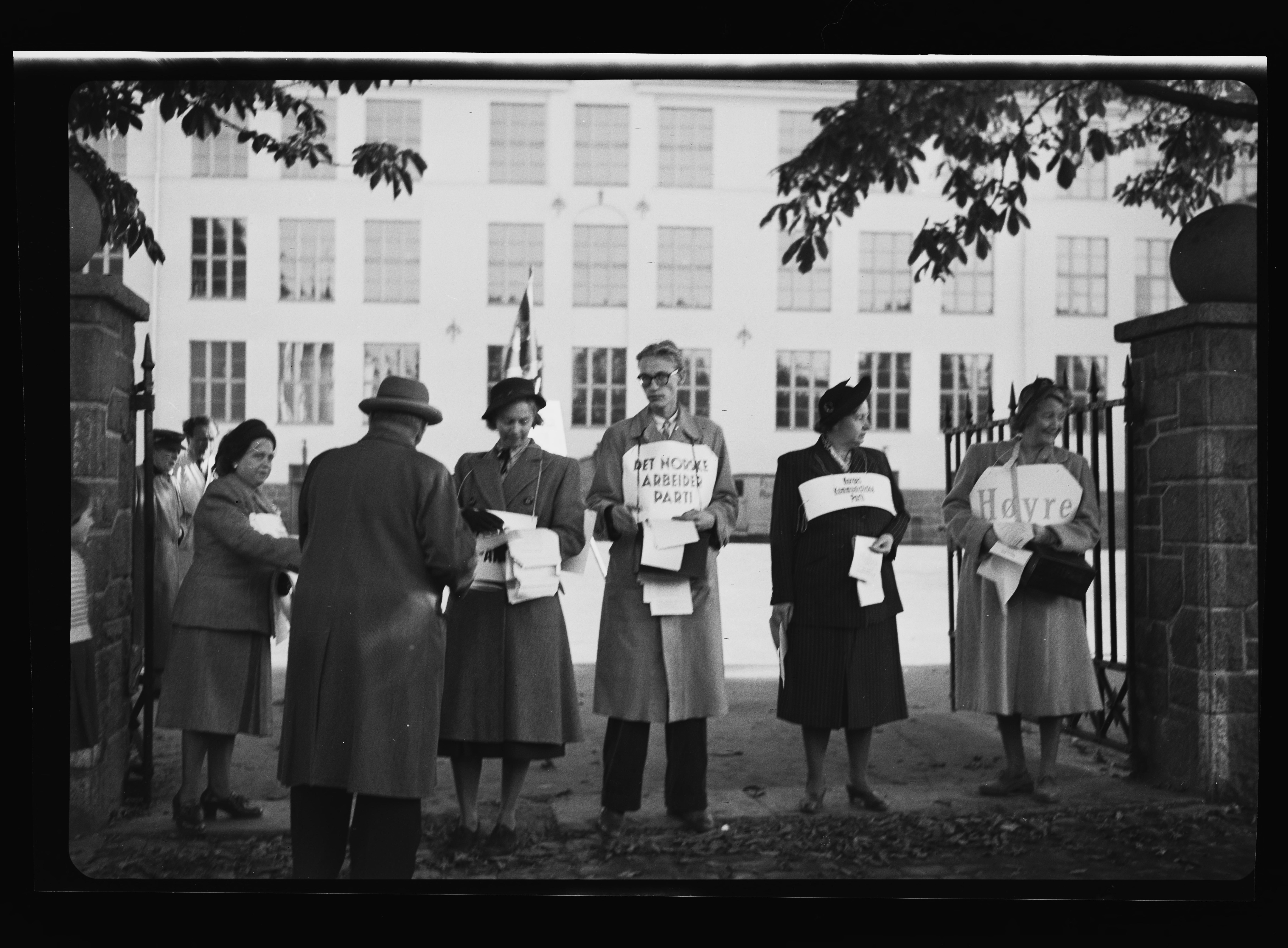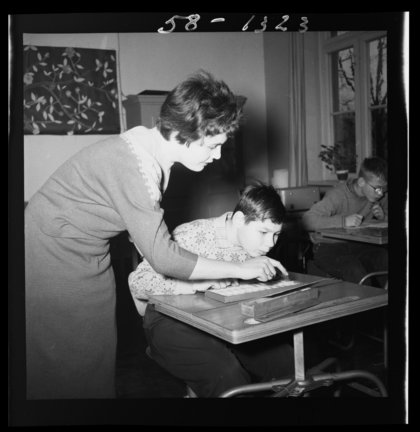The development of the Norwegian welfare state, 1945-1970
The vision of a welfare community that provided the people with social security from ‘cradle to grave’ was largely realised in the period between 1945 and 1970. The development of a Norwegian welfare state was part of broader international commitments to meet the need for social security in a modern society – with roots dating back to the late nineteenth century.

Thinking about the state as a ‘provider’ had flourished during the interwar period in the totalitarian ideologies on both sides of the political spectrum. Moreover, in the Western democracies, the crisis in the 1930s encouraged the efforts to construct new social solutions in the Nordic countries, the United States and Britain.
Yet, it was after 1945 that this development gained full momentum. Over the following two decades, all Norwegians obtained the right to receive the necessary economic support from the state if the ordinary basis for their livelihood disappeared. Norwegian politicians and trade unionists were strongly influenced by developments in Britain, where the reform-focused liberal economist William Beveridge had presented a new social policy plan in 1942. Beveridge pointed out that the war had shown what powerful resources the state could mobilise in the struggle against Hitler. Now, similar efforts were needed in order to protect ordinary people from distress and poverty.
Towards a dynamic welfare policy
Beveridge defined welfare policy as a struggle against five evils: poverty, disease, ignorance, poor housing conditions and unemployment. Similar thoughts on welfare permeated the Joint Political Programme for a post-war society presented by the Norwegian parties in 1945. The politicians would employ an offensive strategy, expanding the social security system and the health and school systems, in addition to increasing the quality of housing. The welfare state was central to the broad commitment to community and equality that characterised the period.
However, the welfare policy was not simply an objective in itself. It was also seen as a means to modernise society and stimulate economic growth. In conservative circles, increased expenditure on welfare had earlier been seen as a threat against economic growth. Now, a more dynamic view broke through. Heavy investments in health, education and improved housing were not only meant to alleviate distress and enhance well-being, but promoting productivity and wealth-creation were equally important. “The resources invested in this field are not dead money”, the Minister of Health Karl Evang noted, “but in reality productive capital”.
PICTURE: A teacher and pupil in a class for pupils with visual impairment in 1958. The welfare state was central to the broad commitment to community and equality that characterised the period from 1945. Source: The Norwegian National Library. Nasjonalbiblioteket. Public Domain.
Comprehensive reform
In 1948, the Norwegian government drafted guidelines for “as far as possible a complete insurance system against the loss of income" and a schedule was set for benefits to be introduced in line with economic growth. Plans for child benefit were already in place before the war and these were unanimously adopted in 1946. Benefits for adults without the need for means testing came in in 1957. This was followed by disability benefits three years later.
Meanwhile, the system of unemployment and sickness insurance benefits was significantly strengthened and expanded, and a comprehensive accident insurance system was also introduced. In the mid-1960s, all the social security areas that had been planned for were covered. With the adoption of the National Insurance Act in 1965, the already established welfare schemes were given a renewed boost: social security and pensions would now be regulated in line with increases in wages in the job market. These new social solutions received an important rubber stamp: It was no longer a question of assistance in the case of special needs, but of new rights for all citizens. The welfare schemes contributed significantly to giving a better status to those with the lowest social rank. They no longer had to “stand with their hat in their hand”, as Prime Minister Einar Gerhardsen put it.
Broad support
The Labour Party spent 20 consecutive years in government between 1945 and 1965, discounting a month’s interruption in 1963, and the modern welfare state was built under social democratic direction. Nevertheless, all the political parties supported the desire for social security and increased equality. Social policy became a clear expression of the post-war consensus on shared values – and the bourgeois government in power from 1965 to 1971 implemented the National Social Security Reform as the crowning achievement of the welfare project.
Admittedly, there was organised opposition outside the political parties warning against being too soft on people so they would not be as productive – or “padding people's armpits”, as the Norwegian phrase goes, through too generous social security. The Farmers’ Party had raised similar objections when the first unemployment benefits were introduced before the war, arguing that social security could have the effect of being a tranquiliser and prevent more individual spirited action.
Radical libertarians would later argue that the social security system threatened people’s self-esteem by removing an individual’s responsibility for their own lives. Nevertheless, the more established right rejected such criticism and argued that there was no contradiction between social security schemes and individual responsibility.
Further reading:
- Mary Hilson, The Nordic Model. Scanidnavia since 1945 (London: Reaktion Books, 2008).
- Tore Grønlie, “The years since 1945” in Danielsen ed. Norway: A History from the Vikings to Our Own Times (Oslo: Scandinavian University Press, 1995).
Links:
- Thanks go to norgeshistorie.no for allowing us to translate this article. The original article can be read in Norwegian here: Trygghet og økt velferd

